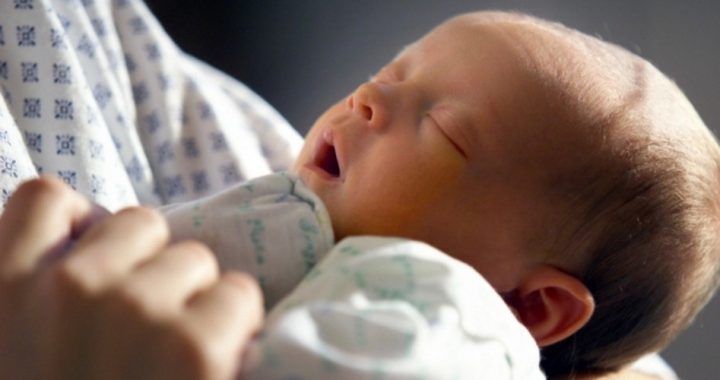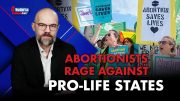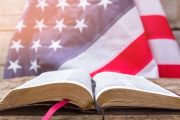
As the nation marks the 40th anniversary of the Roe v. Wade decision that struck down a Texas law — and by extension, all states’ laws — that had criminalized abortion, the debate continues between those who uphold the right to life of the unborn and those who assert that a woman’s right to “choose” must be paramount.
Most of those who argue their respective points do so from a largely theoretical perspective, based on either their moral convictions or their political views. But for some people engaged in the debate, the matter is more personal.
One such category consists of women who have had abortions but who afterwards experienced regret.
An article posted on Lifenews.com on September 12, 2006 (“British Survey Finds Overwhelming Majority of Women Regretted Abortions”) reported that when a British pro-life group placed ads in six women’s magazines asking women who had had abortions to share their experiences, 204 of the 248 women responding said they deeply regretted their abortions. Similar findings have been found in other surveys.
Another category of individuals for whom the abortion experience is highly personal consists of former abortion practitioners. Perhaps the best known was the late Dr. Bernard Nathanson. An obituary published by N.J. com on March 1, 2011 noted: “A founding member of NARAL [National Abortion and Reproductive Rights Action League] Nathanson oversaw 75,000 abortions before experiencing a change of mind and heart. He went on to narrate the film Silent Scream, which graphically shows a pre-born child trying in vain to deflect the abortionist’s scalpel.”
Another such defector from the abortion industry is Abby Johnson, the former clinic director of a Planned Parenthood facility in Bryan, Texas. After witnessing an ultrasound image of a baby during an abortion, Johnson had a change of heart. She wrote in her book Unplanned: “For the briefest moment, the baby looked as if it were being wrung like a dishcloth, twirled and squeezed. And then it crumpled and began disappearing into the cannula before my eyes. The last thing I saw was the tiny, perfectly formed backbone sucked into the tube, and then it was gone.”
Soon afterwards, Johnson resigned her position and became involved with various pro-life groups: She joined Coalition for Life, worked with 40 Days for Life, became a chief research strategist for Live Action, and then senior policy advisor for Americans United for Life.
But there is another category of individuals for whom the abortion issue is perhaps the most personal of all: those who have survived attempted abortions.
One of the best known such survivors in America is Gianna Jessen. On April 6, 1977, Gianna’s biological mother, 17 years old and seven months’ pregnant at the time, sought a saline abortion. However, Gianna was born alive, and survived. She told her story before the Constitution Subcommittee of the House Judiciary Committee on April 22, 1996:
I lived instead of died.
Fortunately for me the abortionist was not in the clinic when I arrived alive, instead of dead, at 6:00 a.m. on the morning of April 6, 1977. I was early, my death was not expected to be seen until about 9 a.m., when he would probably be arriving for his office hours. I am sure I would not be here today if the abortionist would have been in the clinic as his job is to take life, not sustain it. Some have said I am a “botched abortion,” a result of a job not well done.
There were many witnesses to my entry into this world. My biological mother and other young girls in the clinic, who also awaited the death of their babies, were the first to greet me. I am told this was a hysterical moment. Next was a staff nurse who apparently called emergency medical services and had me transferred to a hospital.
I remained in the hospital for almost three months. There was not much hope for me in the beginning. I weighed only two pounds. Today, babies smaller than I was have survived.
A doctor once said I had a great will to live and that I fought for my life. I eventually was able to leave the hospital and be placed in foster care. I was diagnosed with cerebral palsy as a result of the abortion….
I am happy to be alive. I almost died. Every day I thank God for life. I do not consider myself a by-product of conception, a clump of tissue, or any other of the titles given to a child in the womb. I do not consider any person conceived to be any of those things.
Since her story was first publicized in a 1991 article in the New York Times and a 1995 biography of her by author Jessica Shaver (Gianna: Aborted…and Lived to Tell About It ), Gianna Jessen has become very active as a pro-life speaker, delivering talks in Britain and Australia, as well as stateside. During the 2008 presidential campaign, Jessen appeared in an advertisement in which she said: “If Barack Obama had his way, I wouldn’t be here.”
Another abortion survivor, Melissa Ohden, also took President Obama to task for his pro-abortion stance that began early in his political career: “When he was in the Illinois State Senate, Barack Obama voted to deny basic constitutional protections for babies born alive from an abortion — not once, but four times.” Ohden told her story last year in a pre-election video produced by the pro-life Susan B. Anthony List. As reported by The New American online last September, Ohden says in the video, “Many children — more than you might think — actually survive failed abortions and are born alive. I know, because I’m one of them. I was aborted and my body discarded like I didn’t exist.” Ohden continues, “a nurse heard me crying and cared enough to save my life.”
Ohden, who like Gianna Jessen was born in 1977, earned a master’s degree in social work, married and became a mother, and has become a strident pro-life advocate and voice for abortion survivors, using her personal website to further the cause.
Other abortion survivors with similarly touching stories include:
• Carrie Holland Fischer, who says on her Facebook page:
My name Is Carrie. I am an abortion survivor. I survived an attempted abortion. I remember as a little girl, having recurring dreams of a baby in the womb. In these dreams I could hear the [baby’s] cries and screams, and I could sense the baby was in a great deal of pain. These dreams continued for many years until I finally asked my mom what they meant. Mom broke down and cried and told me about the abortion. “I tried to kill you,” she sobbed. My first reaction was to be angry and hate her. “How could you kill your own child?” I asked. I did forgive my mom and told her I loved her…. Today I am happily married, something I never imagined I’d ever be. I share my story wherever God opens a door.
• Heidi Huffman, whose story is posted on GravityTeen.com, is another abortion survivor.
Heidi’s mother was an unwed 17-year-old who was sent home following a failed abortion in 1978. When her mother, Tina Huffman, consulted with her family physician after two months of sickness, she fund out she was still pregnant. He doctor induced labor and performed an emergency C-section at 28 weeks and Heidi entered the world, weighing just 3 pounds, 3 ounces. The doctor described her birth and survival as “a miracle.”
• Sarah Smith was born several years before the others, in 1970, three years before Roe v. Wade. However, California, where her mother lived, had already legalized abortion. Her mother had a presumably “successful” abortion in Los Angeles, but the doctor missed the fact that she was carrying twins. When Sarah’s mother felt her kicking in her womb, she had a change of heart and returned to the doctor and said she wanted to keep the baby.
“To this day, my mother deeply regrets that abortion,” Sarah said. “I know the pain is unbearable for her at times when she looks at me and knows she aborted my twin brother. Mom says ‘the protective hand of Almighty God saved my life,’ that God’s hand covered and hid me in her womb, and protected me from the scalpel of death.”
Sarah’s brother in the womb, who was aborted, was named Andrew. Sarah and her family had a memorial gravestone placed in a Southern California cemetery with the inscription: “Andrew James Smith, Twin Brother of Sarah — in our hearts you’ll always be alive — November 1970.”
The stories of these abortion survivors, as well as Andrew Smith and millions of his fellow abortion victims, convey a bittersweet message of hope amidst tragic sadness.
Related articles:
Video Message From Abortion Survivor Goes Viral
Pre-Born Baby’s Smile During Ultrasound Prompts Mother to Reject Abortion
500 in N.H. March for Life, Oppose Abortion
Pro-Life Events Across Nation Mark 40th Anniversary of Roe v. Wade



